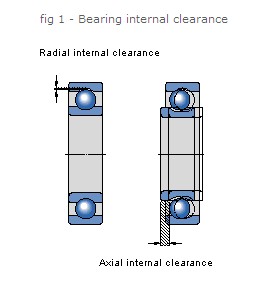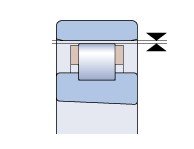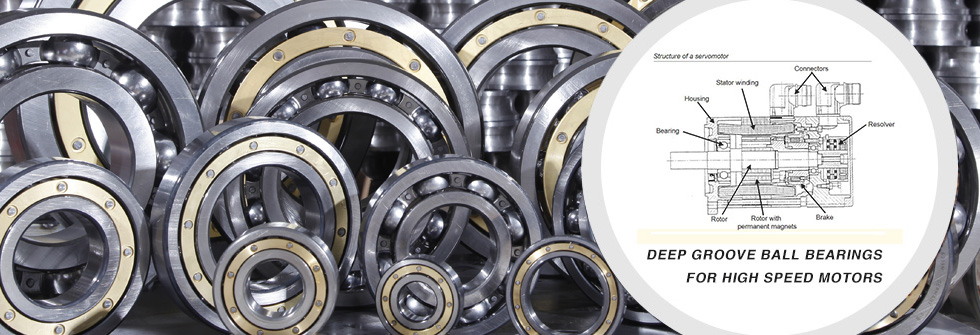What does Bearing suffix C3 clearance mean?
2015-10-15Bearing internal clearance (fig 1) is defined as the total distance through which one bearing ring can be moved relative to the other in the radial direction (radial internal clearance) or in the axial direction (axial internal clearance).
 |
 |
It is necessary to distinguish between the internal clearance of a bearing before mounting and the internal clearance in a mounted bearing, which has reached its operating temperature (operational clearance). The initial internal clearance (before mounting) is greater than the operational clearance because different degrees of interference in the fits and differences in thermal expansion of the bearing rings and the associated components cause the rings to be expanded or compressed.
The radial internal clearance of a bearing is of considerable importance if satisfactory operation is to be obtained. As a general rule, ball bearings should always have an operational clearance that is virtually zero, or there may be a slight preload. Cylindrical, spherical and CARB toroidal roller bearings, on the other hand, should always have some residual clearance - however small - in operation. The same is true of tapered roller bearings, except in bearing arrangements where stiffness is desired, e.g. pinion bearing arrangements, where the bearings are mounted with a certain amount of preload, see section Bearing preload.
The bearing internal clearance referred to as Normal has been selected so that a suitable operational clearance











